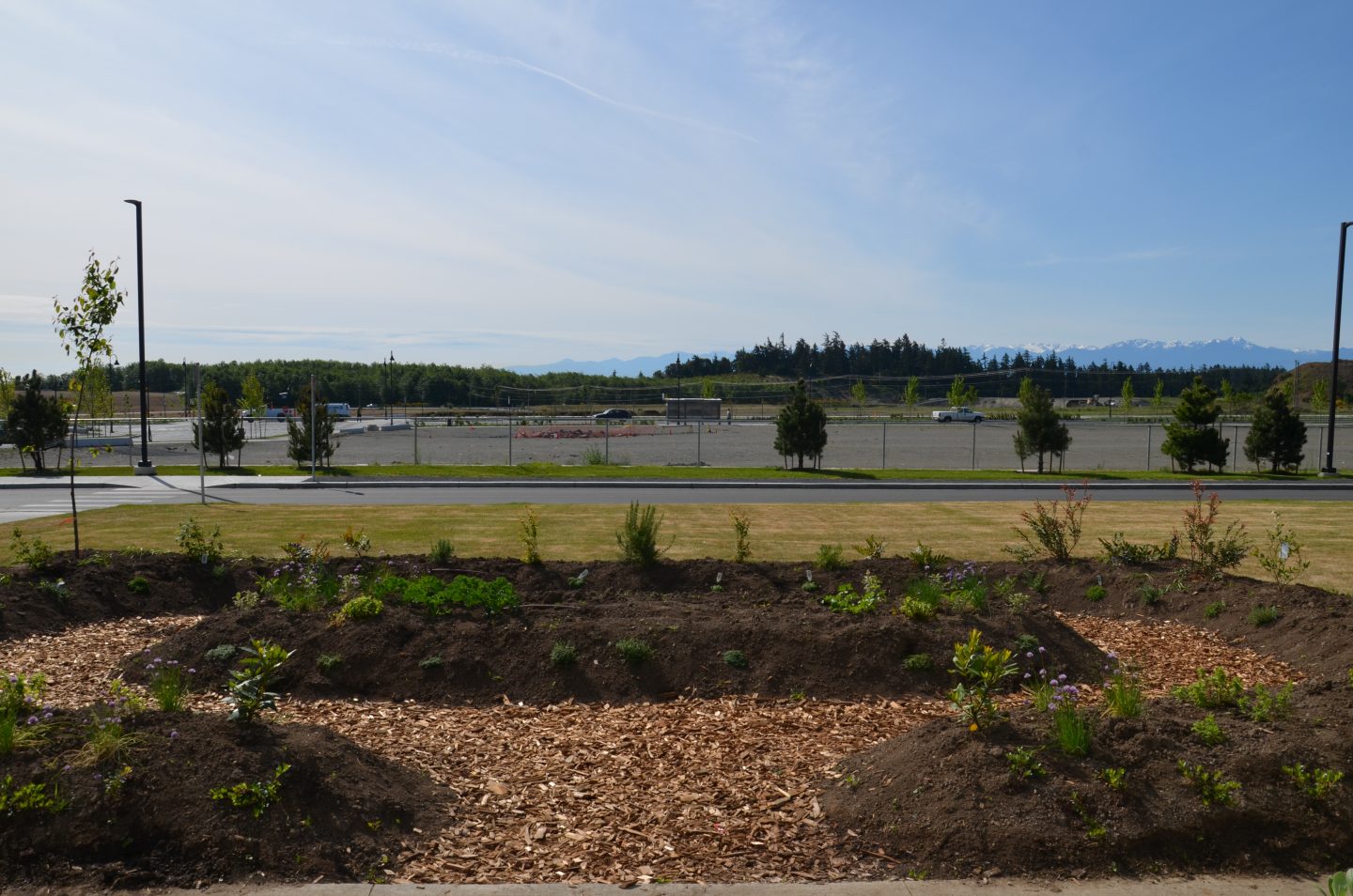The Royal Bay Secondary Garden….Our Story
The garden at Royal Bay Secondary began as a small piece of criteria on an RFP for our school plan. Once we had agreement from the architects to include a garden in the plans, we waited patiently while the school was being constructed. With so many other, traditional aspects of a school to be considered in the design process, it felt like the garden site was really a minor detail that didn’t garner much attention. As the opening day of the school approached (Sept 2016), we waited with anticipation to see where and if the architects would include a garden space.
Luckily, some turf was rolled back from the front of school landscaping, offering a small square (10m x17m) for us to work with. The location was advantageous in that it was south-facing (incredible sun exposure), ocean view (stunning but windy) and easy access for food studies students (awesome!). However, aside from this, it was simply a bare patch of ground.
With some funding under our belts, our team pondered the spot for a few months, and considered what would be the best way to work with this site. It being at the front of our school, we wanted something that wouldn’t require a high fence (for aesthetic reasons), but we also needed to be mindful of potential munching from deer. We pondered some more, and gradually came to the conclusion that the garden would be built without a fence, and focus on culinary herbs and native edible plants.
With this strategy in mind, we then addressed the problem of how to build the garden. Our first concern was water. Although lawn irrigation had been installed in the site, we wanted slow drip irrigation to conserve water and ease of use. We also wanted to create an interesting design for the garden. We hired a local landscaping company to install the drip irrigation and bring in soil and cedar chips for a path in March.
With the infrastructure in place, we then set to the task of acquiring plants. One of our team members owns a local nursery, so we went to her first and used her guidance to select plants that would not be appetizing to deer, and suitable for our site conditions. Furthermore, plants had to meet our criteria of being either culinary herbs or native edibles. Students eagerly threw the first batch of plants into the ground within one class period. It was amazing to watch them work!
We then were able to obtain a second round of plants at near cost. These were put into the ground the following week, again with ease. Meanwhile, we had started many seeds with our seeding trays in the classroom. Some of the seedlings were ready to go into the ground with the purchased plants – kale, cilantro, parsley and dill. Some continue to grow on our classroom window sill, and will be put in the ground soon. We have huge tomato plants, echinacea, calendula, more dill, parsley, and cilantro that will be transplanted into the garden shortly.
Students enjoy collecting fresh herbs for cooking right out of the garden, and they learn what plants look like and make a connection between what they eat and the natural forces that help create it. As our school has both a Food Studies and Cafeteria program, there are many students that have the opportunity to collect and cook with food from the garden on a regular basis. We also have a small garden club that meets every Friday after school to take care of some of the basic maintenance tasks, such as weeding transplanting and watering seedlings.
Right now it feels like the garden process is going very smoothly. We have overcome a leaky irrigation head (from initial installation for grass) and have to keep on weeds that are starting to emerge, but with a slow-drip timer in place, the watering is taken care of and the sun and heat are giving the plants lots of energy to grow.
We don’t have a specific place for gardening equipment at this point, so we have to be mindful of storing shovels, soil, and all the dirty stuff carefully. So far there hasn’t been any vandalism from humans or deer, and we hope it stays that way.
Our garden has only been functioning for a month or so now, and we anticipate that its use will grow and grow. It will continue to set a positive, active tone in our school, where students can be proud of the fact that they have a garden, and know how to use it!

